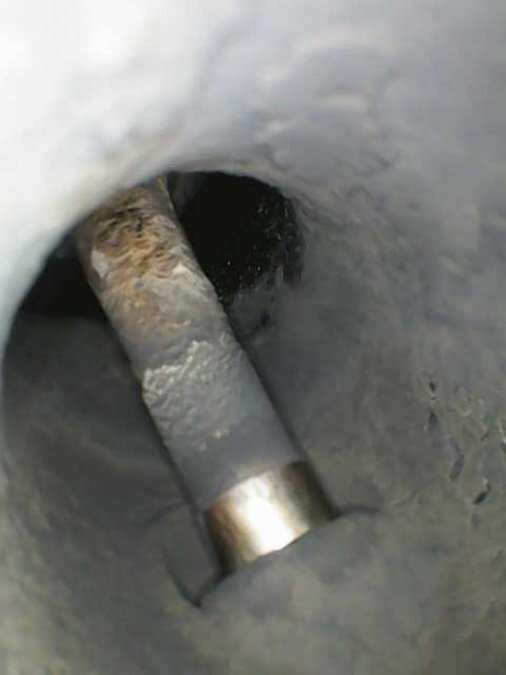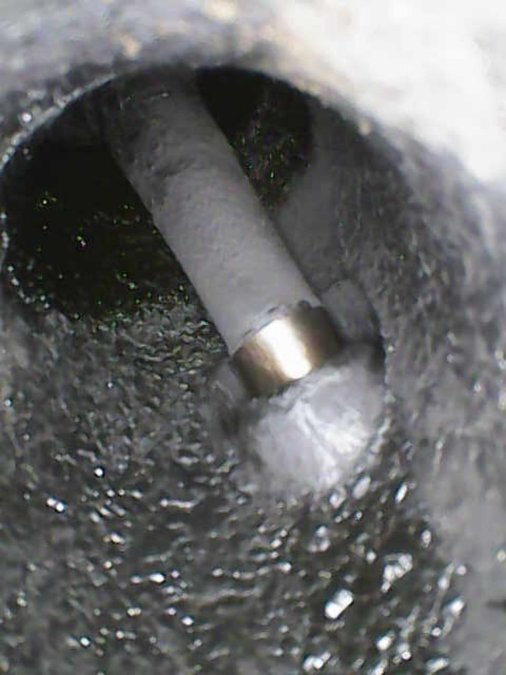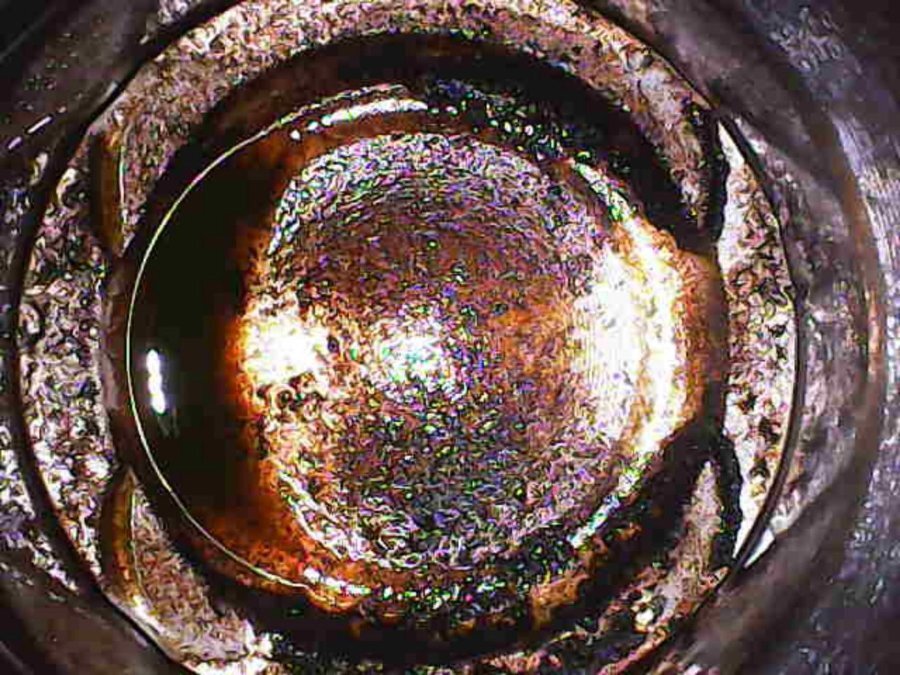
Ivan_B
Members-
Posts
1,195 -
Joined
-
Last visited
-
Days Won
13
Everything posted by Ivan_B
-
North Dakota Experience... Enjoy it while you can 😂
-
I just made a snowman 😅
-
@Dave72dt the plug wells were certainly oily, when I first started troubleshooting this problem. But I did clean them out before taking the plugs out, and also cleaned the coils, etc. After some more test-driving, compression testing, etc., the wells weren't oily anymore. So this is not it, I am afraid Update: I removed the intake manifold (this was considerably more difficult than anticipated, but I did it). Also removed the exhaust. I am not seeing any obvious signs of the stem leaks. So, the puddle must be coming through the rings or the head gasket. I'll try to spin the car cold, tomorrow, to see if I can generate an active leak... Or maybe pour something into a couple of cylinders to see how fast it seeps through the rings... 🙄
-
This is the Chrysler 1.4 multiair, non-turbo (2012 Dart, etc.) 😁 https://www.youtube.com/watch%3Fv%3DypxEkt33Ytw I am unaware about any special circumstances about it. There is an air-oil separator box, sitting on top, but that thing is supplying the crank gasses to all the cylinders, not just the first two. In addition, there should be no oil in the intake, except the crank ventilation fumes.
-
I did not even think about this, that way, thank you for bringing this to my attention. Indeed, there is a liquid puddle of oil in 1 & 2. I suspect that the amount that can seep through the rings would've been burned-off. While, if the rings were leaking that much it would idle like a tractor (which it does not). I'll try to take the intake manifold off, later today, to check what the intake stems look like.
-
@plymouthcranbrook I am also surprised that I am not noticing smoke, etc. Maybe it is happening during deceleration, not sure. I don't really have anyone to check, at this time. The exhaust does smell distinctly, but it was always this way as long as I had the car 🤔 The plugs had plenty of carbon, I cleaned them, and they look better, but the 1st one is very wet with oil. @JBNeal Are you referring to the 4 groves? These are the cut-outs for the valves If the pistons hit the valves, I would have bent valves and no compression. Also, I do take back the statement about not noticing the oil consumption. It looks like I did not notice any "in the past". Just checked, I am 1/2 qt. low. So I guess, it is going right into the cylinders 🫠
-
This is for my other car, hens posting in the off-topic section. I was getting an intermittent single-cylinder misfire code, on idle only. Swapped the coils, plugs, injectors - no change. Tested compression - 1 & 2 are a bit low (in comparison to 3 & 4, but well within specs. Finally took a bore scope to it, and here is what I found. 1 has the most oil, 2 is a bit less; 3 and 4 are normal, no oil. I am thinking - leaking valve stem seals? This is a 90k engine. I've noticed no oil/coolant consumption, and no smoking of any kind, yet 🙄
-
That's a good point. Last time I needed to store the car, I just filled it with the ethanol free gas, since it is supposed to last longer (I think). Also, I've recently seen some really advanced youtube engine people using an old Windex bottle to mist the gas right into the engine, just as the carb itself would do. Can't do any better than that . . . Well, unless you feed it some propane from a hose 😅 Go for it! 😉
-
Replace steering box insulators with box in place?
Ivan_B replied to sjaakslinger's topic in P15-D24 Forum
I was under impression that you can leave the steering link in place and just undo the clamp below the steering wheel to get the box loose to slide the new insulator in there. Has anyone done this? I also need to replace mine 🤔 -
You are supposed to use fogging oil before storage, not afterwards 😅 Other than that, just crank it cold to get some oil circulated, as you've been doing, and that's it. Also, the fuel pump should fill the carb while you are cranking for oil, so I would suspect that no additional gas into the intake is necessary
-
So the engine has not been run after what ever was done with it? Okay, just pressurize the system with some sort of pump, to be on a safe side, then
-
Same as usual... I would check the bores, to make sure that there is no rust. Then, spray some oil, in there, and rotate the engine by hand (no plugs or ignition, of course) to lubricate everything before attempting to start it. You can certainly pressurize the oil system manually, as discussed above, but I suspect that this would be excessive for a working engine that was in storage.
-
And this is probably the correct way of doing this 😉
-
How many do you need? How about just making one yourself from some spring steel wire? The curvature does not look too complicated
-
https://www.autopaper.com/1934-plymouth-dealer-color-prestige-sales-brochure-six-de-luxe-coupe-sedan.php The dealer brochures could be useful
-
Just crank the engine, cold, to circulate the oil And, as previously mentioned, use proper lubrication during the assembly.
-
Guys, are you seriously advising the "Italian tuneup" on a 1940 American car? 🙄 Also, to clean the engine sludge out - use synthetic oil with detergents, and change often, works very well. Also #2, seafoam will just evaporate from the oil before you know it.
-
No, no, you are alright, a hinge type assembly at the floor side makes sense. I just do not recall seeing one, on my car. I'll take another look at it, later.
-
That looks just like my setup - 40 tail pipe with water stains and cardboard to the left 😅 Sorry, I don't think you can do much about it. Other cars will do this too, depending upon the configuration of the exhaust, its age, and other factors. My newer fuel injected vehicle does not spit out of the pipe but it has a small rusty hole at the bottom of the front edge of the muffler and the black water comes out of there every-time you run it. Sometimes, a lot of water comes out 🙄
-
I am that guy. But I no longer have a girlfriend with a grandpa's car because we've got married a long time ago 🤣 But seriously - all stock original cars are the best! 😍
-
I just looked at my own 40 pedal - there is no hinge at the bottom. There is just a rubber block with two holes molded to the pedal body.
-
You should've carefully inspected and tested the engine right away... I've also had a very bad experience with someone "rebuilding" a motorcycle engine for me, once. After that, I had to send it to another shop who discovered all sorts of "things" inside Now I know better...
-
The main problem here, I think, is that if he fixes the bottom to the studs, the top of the other (and presumably correct) pedal appears to be too far away
-
You are probably right, sorry 😅 However, it is always nice to pass something good on to the next generations. If I got a stock classic car from my grandparents, that would've been so awesome (but I did not, because their cars did not survive). For the proper joints, I was referring to the disassembly-friendly connections, as opposed to a single-piece welded exhaust, as done by some cheap and lazy shops. My manual only goes back to 1936, but it looks like the factory exhaust had 2 pieces: down pipe with muffler, and the long back pipe.
-
And that is the right choice, no need to make silly noises on a good-looking stock car 😉 Did you invest into stainless, for longevity? Also, did they do proper joints, in all the right places, as the factory setup would've been?












